TEAM BUILDING IN NAM DINH
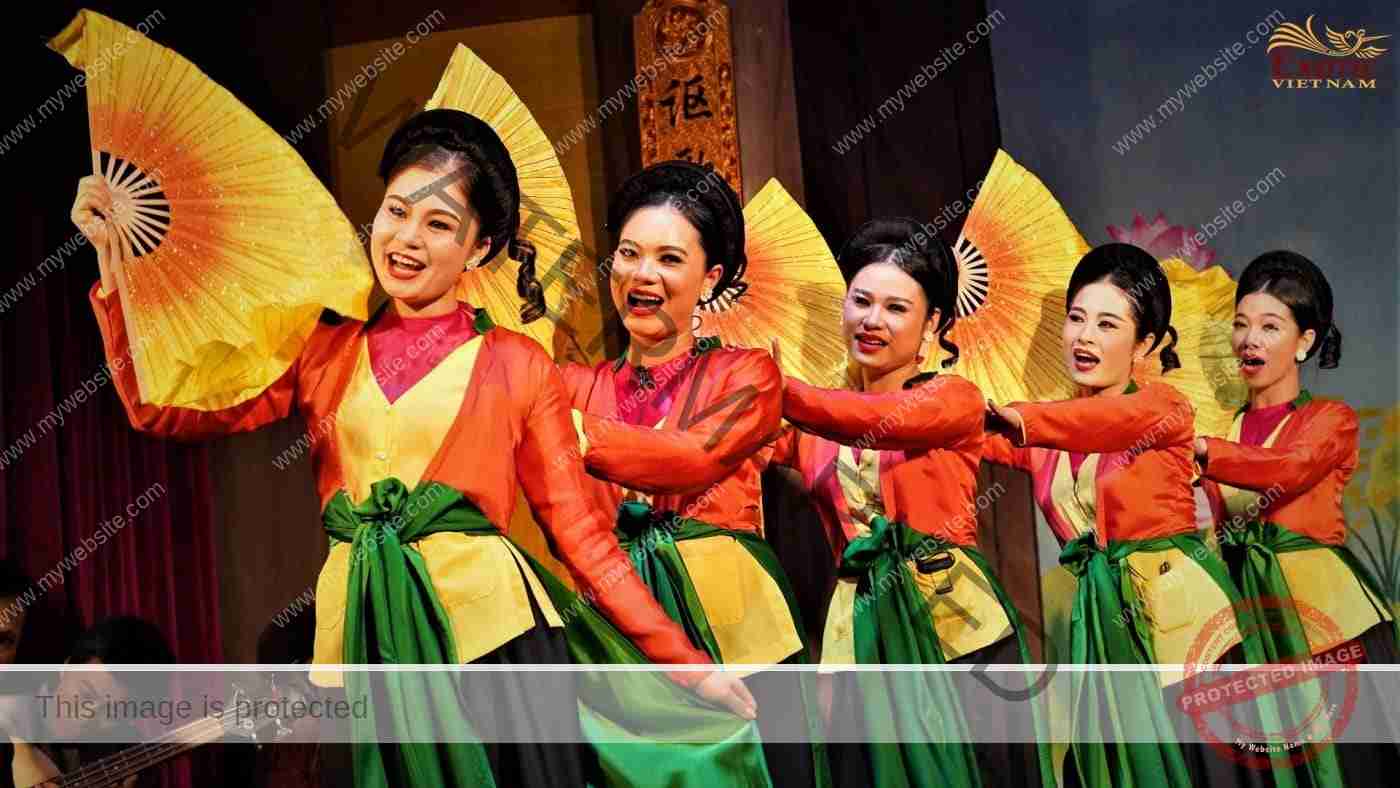
Location: 85km south of Ha Noi (1¾ hours by car), 32km from Ninh Binh (45 minutes by car), 90km from Hai Phong (2 hours by car).
Introduction: 85km south of Ha Noi, Nam Dinh is a coastal province with a long history in the Red River Delta. From the 13th century, the Tran Dynasty built Phu Thien Truong with many palaces to serve the royal family in Tuc Mac village, where the Tran family originated. Palace architecture as well as administrative organization in Thien Truong are similar to those in Thang Long Imperial Citadel, so this place is likened to the second capital of the country during this period. In 1533, the coastal area of Nam Dinh was the first place where Portuguese missionaries set foot in Viet Nam. This led to the establishment of hundreds of parishes with lots of Catholic churches in the years that followed, some of which remain to today as historical witnesses. In 1921, Nam Dinh was recognized as a city under the French colonial period, home to the largest chain of textile factories in Indochina.
Today, Nam Dinh City’s vicinity attracts tourists with its traditional farming villages surrounded by big rivers and vast rice fields. Many ancient architectural works such as traditional houses, family temples, village communal houses, Buddhist pagodas, … and Catholic churches are found everywhere. The church bells hum slowly, spreading down every street corner, rustic villages, peaceful rice fields which create a unique melody only in Nam Dinh. In addition, many trades inherited through several generations such as weaving, growing ornamental plants, carpentry, water puppetry, etc., and unique customs, folk beliefs, performing arts and folk festivals, are still preserved and developed in modern life.
Eco team building in Nam Dinh is a journey to bring participants into the authentic world of the Red River Delta’s countryside, where they can fully and vividly feel about the intangible cultural values presenting in people’s routines. The challenges are simulated from activities in rice farming, salt making, fishing, clam raking, etc. to help people bond together, share work for a common goal in laughter and joy.
Highlights: Nam Dinh City, Xuan Thuy National Park, Pho Minh Tower, Tran Dynasty’s Temple, Churches in Nam Dinh, Hai Hau countryside, etc.
Facilities & services: world class hotels and restaurants.
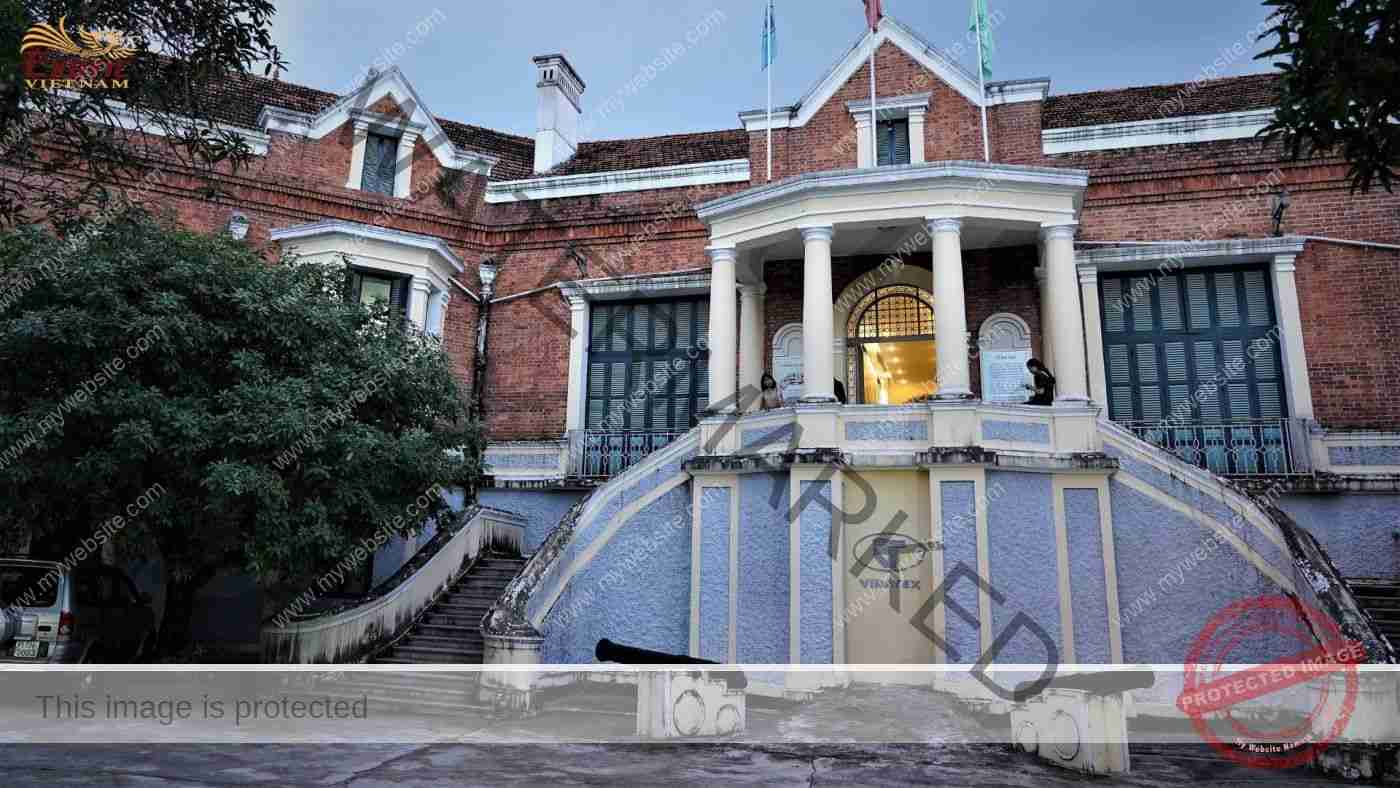
Nam Dinh City
Not far from Ha Noi, located at the confluence of the Red River and Nam Dinh River, Nam Dinh City has an important strategic position in the Red River Delta. In 1804, Nam Dinh citadel was built by Emperor Gia Long according to Vauban architecture, which aimed at both an administrative center of the region and a solid fortification. Currently, the remaining vestiges are only a section of northern gate with a length of about 220m and the flag tower. However, the flag tower was destroyed by a US air raid in 1972, and was restored to its original form in 1997.
In the French colonial period, Nam Dinh was one of the first cities established in Indochina in 1921. Thanks to the convenience of river and railway transport, Nam Dinh quickly became the largest textile center in French Indochina and a hub for goods trading in the North. Do Quan Wharf and a number of small streets as trading quarters such as: gold, porcelain, candy, and so on along with Rong Market, Big Church, Vong Cung Pagoda, etc. located along the banks of Nam Dinh River, conjuring up the image of a busy commercial port in the centuries-old history of Nam Dinh.
Once to Nam Dinh, you visit not only prominent hotspots such as Lake Vi Xuyen, Cua Dong crossroads, Temple of Literature, Tran Dynasty’s Temple, Nguyen Du flower street, … but also feel the unique charm associated with small streets (during the blooming season of red silk cotton flowers, the best brilliant in March), the local specialties, the whistle of the textile factory and the hospitality of the Southern Citadel’s people.
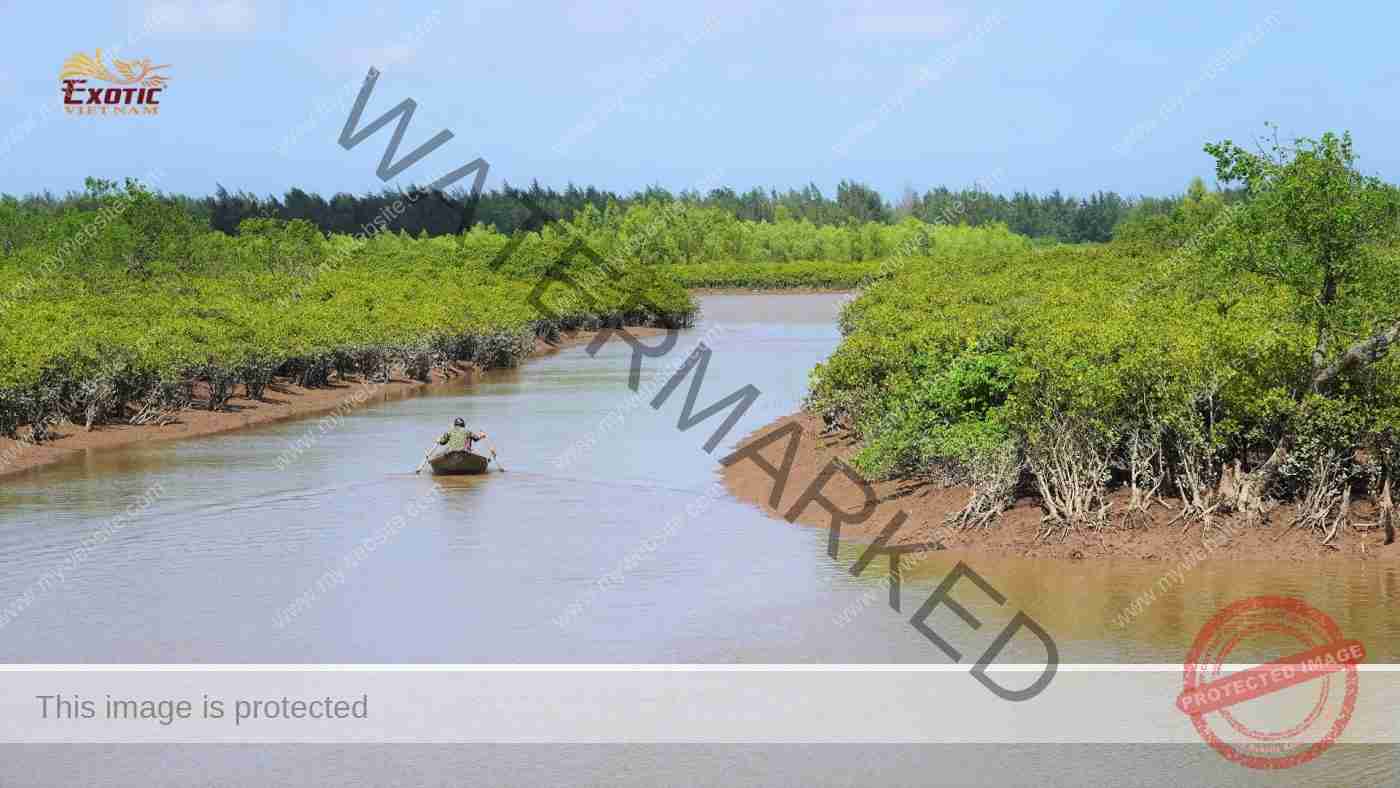
Xuan Thuy National Park
The fertile alluvium of the Red River and coastal sea currents have created a unique wetland at the mouth of the Red River (the Ba Lat estuary). In 1988, this area was recognized by UNESCO as a Ramsar site. In 2003, in order to preserve the wetland ecosystem where a great diversity of plants and animals that live here, especially aquatic species and water birds, migratory birds, Xuan Thuy National Park was established on an area of 14,500ha, of which the core zone is 7,100ha. In 2004, UNESCO continued to recognize Xuan Thuy National Park as the core area of the World Biosphere Reserve in the coastal areas of the Red River Delta provinces.
Con Ngan and furthermore Con Lu have a history of over 100 years, and Con Mo (also known as Con Xanh) which was built up about 20 years ago. They mostly belong to the core zones of the national park. In the park, there are 192 species of vascular plants, of which nearly 20 species are adapted to flooded conditions to form a system of mangroves in an area of over 3,000ha. In terms of animals, in addition to 17 species of mammals, 37 species of reptiles & amphibians were recorded and rich aquatic resources with over 500 species of benthos and zooplankton (shrimp, fish, crab, oysters, clams, etc.) have also been identified. The park is an important resting and wintering place for 136 migratory waterfowl species with tens of thousands of individuals from November to March every year. This place regularly records the presence of endangered water birds in the Red Book such as the Black-faced Spoonbill, Spot-billed Pelican, Saunders’s Gull, Spoon-billed Sandpiper, etc. The buffer zone covers 8,000 ha, including the area of 5 communes Giao Thien, Giao An, Giao Lac, Giao Xuan and Giao Hai. Fishing and aquaculture in the buffer zone communes thrived, providing the main source of income for local people. In addition, promoting the potential of community-based eco-tourism has been opening up for communities to have sustainable livelihoods, harmoniously combining the goals of nature conservation with economic development.
This is also a place where visitors can admire tranquil tidal creeks, watch a lot of strange birds roaming around and learn about the lives of the people by boating through the mangroves. From April to July every year, under the canopy of mangroves in Xuan Thuy National Park, Kandelia and Bruguiera bloom fragrantly throughout the region, helping to develop beekeeping.
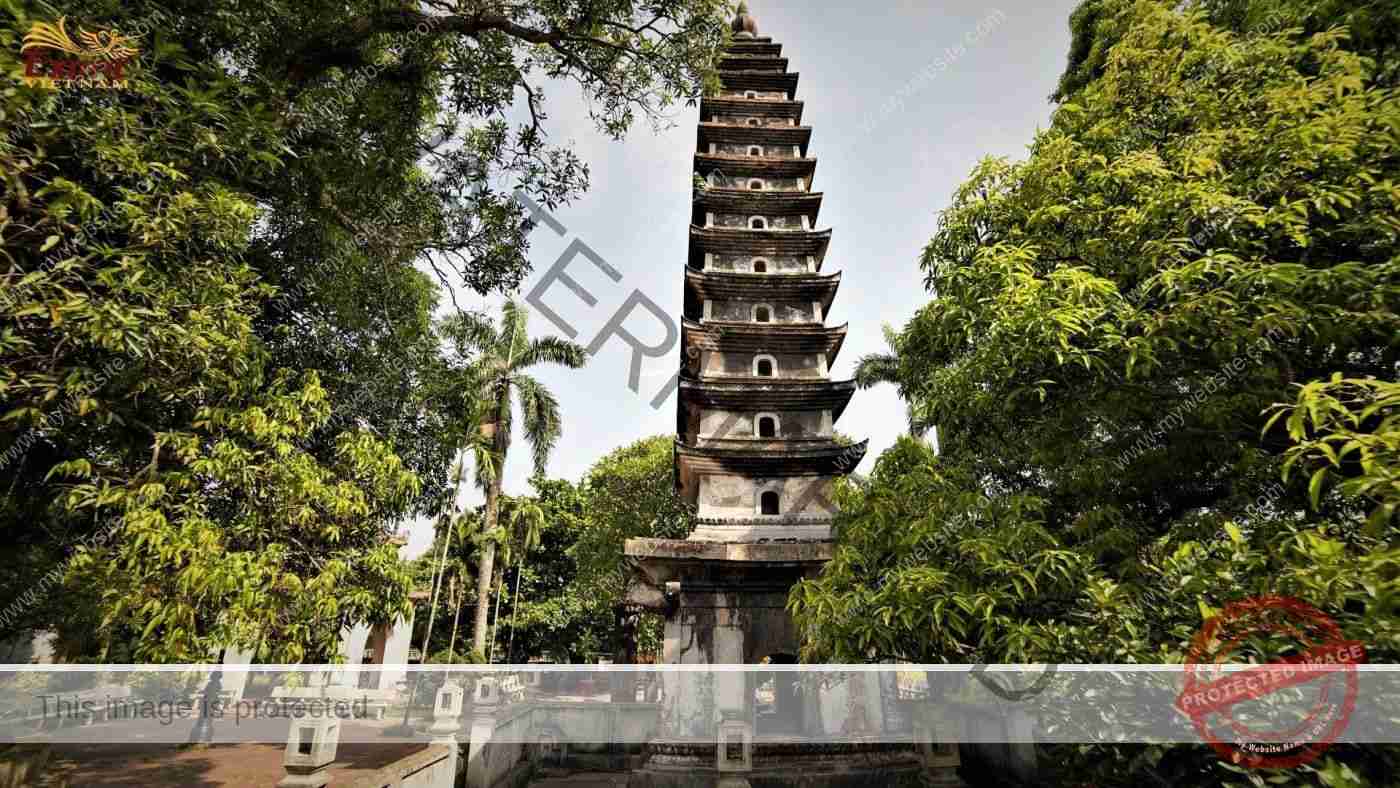
Pho Minh Pagoda
5km from the city centre of Nam Dinh, Pho Minh Pagoda was originally built during the Ly Dynasty and later expanded in 1262 during the Tran Dynasty and restored many times in the Mac Dynasty in the 16th century. It was a place for many Tran Dynasty’s emperors and high-ranking mandarins to chant the Buddhism scriptures. According to historical books, in 1308, after Tran Nhan Tong’s death at Yen Tu Mountain, his son Emperor Tran Anh Tong placed 7 of the 21 sarira of his father in a stone palanquin and built Pho Minh tower above.
Pho Minh Tower was built in a square shape like a lotus, including 14 floors, 19.5m high. The two lower floors are made of stone, the remaining floors are built with bare bricks. There are 4 arched doors on all floors. The base of the tower is square, each side is 5.2m. At the foot of the tower, there are also stone markers where a very large copper cauldron used to be placed, which is classified as the four bronze wonders of An Nam. This cauldron was melted down by Ming Dynasty’s army to make weapons in 1426.
Besides Pho Minh Tower, there are many valuable artifacts in Pho Minh Pagoda. Previously, the pagoda had 120 statues, but due to the destruction of time and war, now there are only more than 50 red-lacquered and gold-trimmed statues, many of which are beautiful in shape, balanced in proportion, and highly artistic. You can find statues of the three founders of the Truc Lam Buddhist Sect, a national treasure recognized in 2022. The set of statues was sculpted in the 17th century, made of wood, painted with gilded lacquer, and is still intact, including Buddha Emperor Tran Nhan Tong entering Nirvana and Phap Loa and Huyen Quang meditating on the right & left.
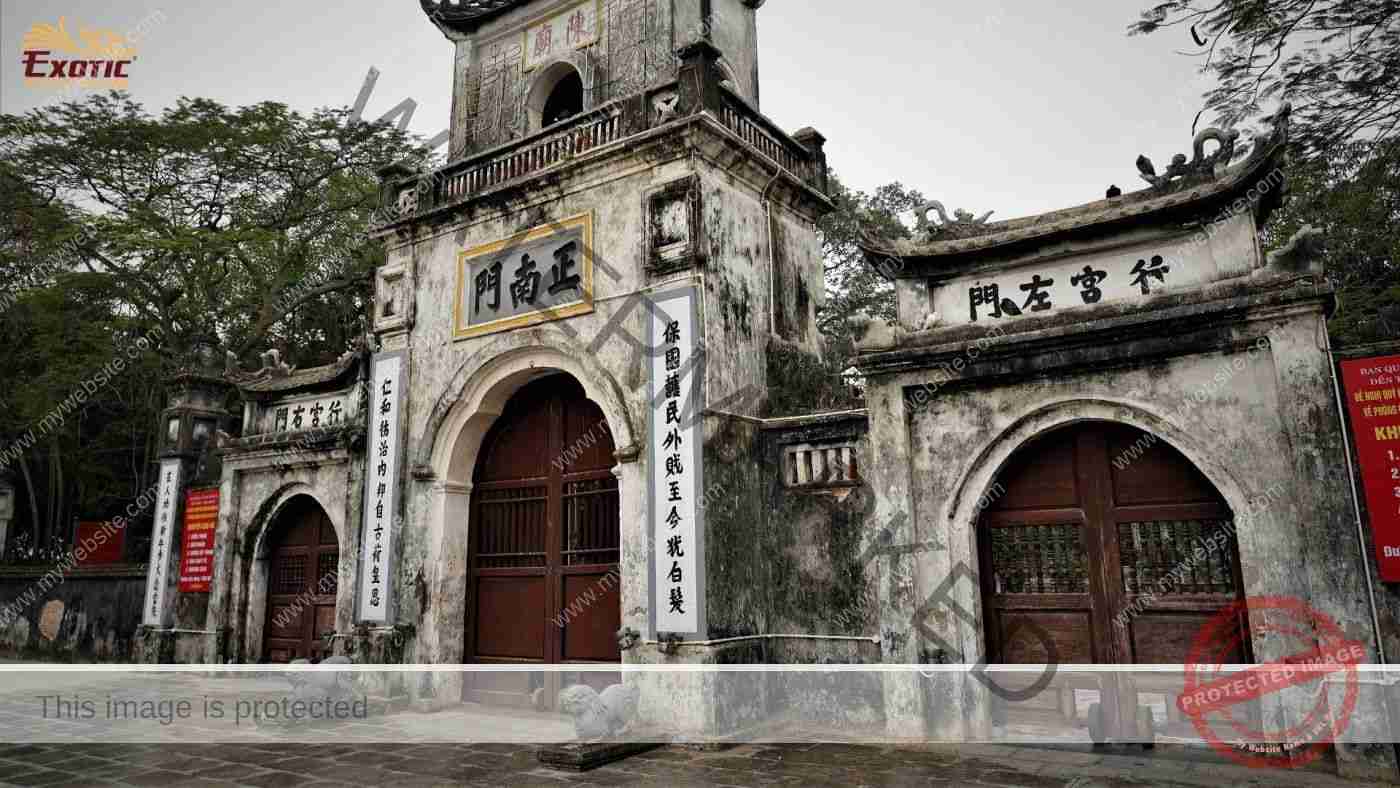
Tran Dynasty’s Temple
The outstanding feature of Tran Dynasty’s Temple is that it’s structured by three architectural works: Thien Truong Temple (Upper Temple), Co Trach Temple (Lower Temple) and Trung Hoa Temple have the same design and equal size. Each temple consists of 3 main buildings: a 5- compartment front hall, a 5- compartment middle hall and a 3- compartment main sanctuary.
Located in the centre, Thien Truong Temple was built in 1695 on the foundation of the former Thai Mieu – the ancestral temple of the Tran family and the former Trung Quang Palace – where the grand emperors lived and worked. The front hall is the place for worshiping the mandarins with great merits to assist the Tran Dynasty. The middle hall is laid the tablets of the 14 emperors of the Tran Dynasty. The main sanctuary worships the four ancestors of the Tran family, and the queens and royal concubines.
Located to the east of Thien Truong Temple, Co Trach Temple was built in 1894 on the old house of Hung Dao Vuong, a hero of the Tran Dynasty who commanded the Dai Viet armies that repelled two major Mongol invasions in the 13th century. The front hall is placed tablets of three Tran Hung Dao’s trusted generals, Pham Ngo, Pham Ngu Lao and Nguyen Che Nghia. The central hall worships tablets and statues of Tran Hung Dao, his 4 sons, Pham Ngu Lao and the left right generals. The main sanctuary is placed the tablet of his parents, and his wife (Princess Thien Thanh), 4 sons and 4 daughters-in-law, daughter and son-in-law.
Located to the west of Thien Truong Temple, Trung Hoa Temple was built in 2000 on the foundation of the old Trung Hoa Palace – where the reigning emperor received advice from the grand emperor. In Trung Hoa Temple, there are 14 bronze statues of the 14 Tran Dynasty’s emperors, located in the middle hall and the main sanctuary.
Attracting a large number of visitors from all over the country who want to be promoted and successful in career, Tran Dynasty’s Temple annually organizes the Seal-opening Ceremony on January 15 (lunar calendar). This festival dates back to the old days when the emperor worshiped Heaven and the court opened the national seal to return to normal work after the Lunar New Year holiday.
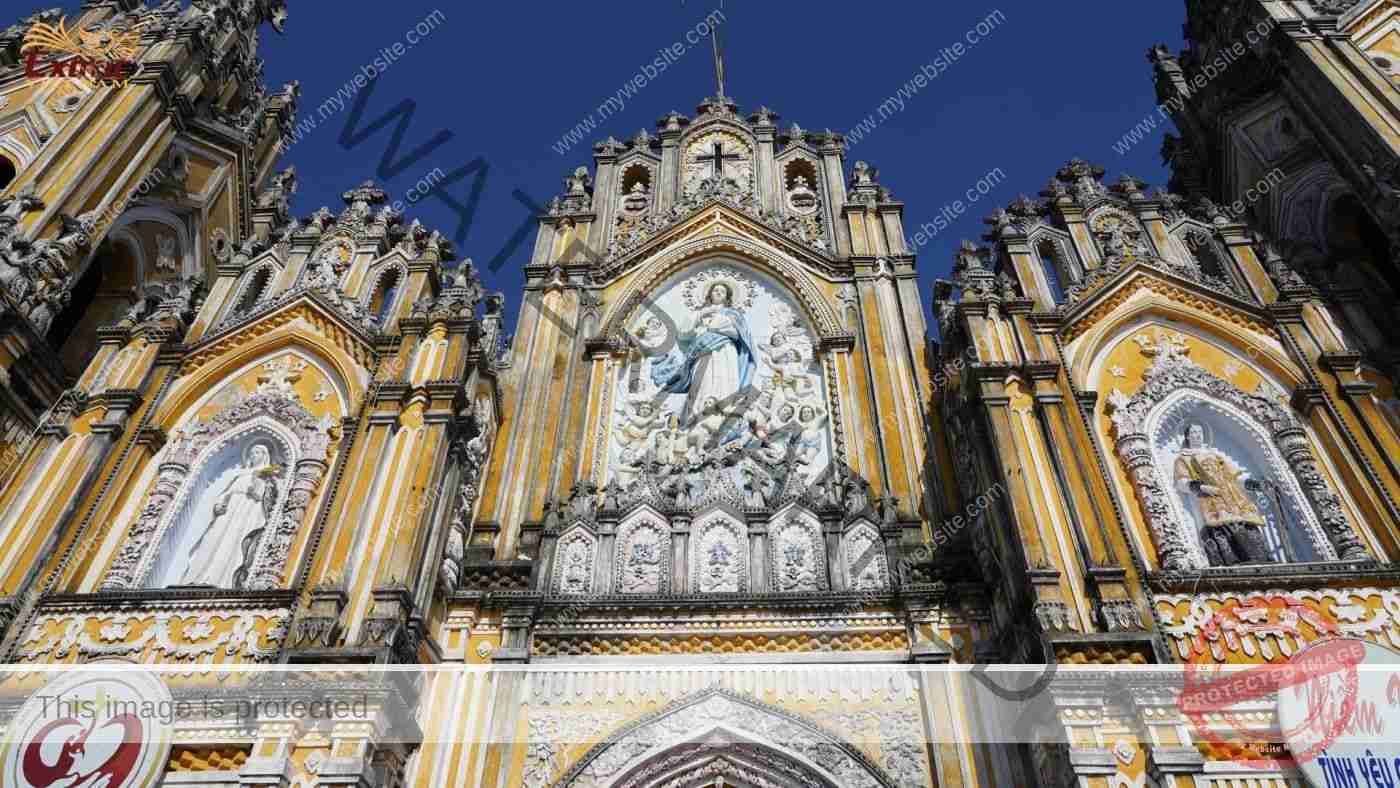
Churches in Nam Dinh
The year 1533 marked the history of mission in Viet Nam with the presence of the first Portuguese missionary to the coastal villages of Truc Ninh, Hai Hau and Xuan Truong districts of present-day Nam Dinh province. By 1659, after less than 50 years preaching of the Jesuits with language differences, cultural barriers, a separate diocese was still not established, yet Catholicism had spread all over Son Nam county (Nam Dinh, Ninh Binh and Ha Nam provinces now) with 183 churches built out of a total of 340 churches in the country. Since the 17th century, the Jesuits have missioned here, also there were Société des Missions étrangères de Paris, the Order of Discalced Augustinians, and especially the Dominicans.
Founded in 1659, experienced many ups and downs in history such as 1848 – 1936 and 1954 – 1989, the current Bui Chu diocese is located in Nam Dinh province, divided into 13 deaneries with 181 parishes and a number of believers possibly reaching 90% of the population in some places. The development of Catholicism also makes Nam Dinh home to more than 600 churches, large and small. At some viewpoints, just standing in place and looking around you can see 9 to 10 church bell towers in the distance, looming in the villages and rice fields. Spanning a long history, churches are mainly built in Gothic and Baroque architectural styles, but some clearly show traditional Vietnamese architecture such as façade in the style of three-arched-entrances gate or interior with gilded wood.
The church is considered as the common house of the community in the village, showing the attachment of not only religious rites but also the memories of a person’s life from first baptism, confirmation, marriage to funeral. Therefore, each church is both a splendid and unique architectural masterpiece in harmony with the natural landscape and the pride of every devoted believer in the parish.
In Xuan Truong and Hai Hau districts, just a few kilometers away, you can see prominent churches with many meticulous patterns and harmonious colors, large arched doors and soaring bell towers. Some of beautiful churches can be visited such as Phu Nhai (Basilica since 2008), Bui Chu, Kien Lao, Trung Lao, Phuong Chinh, Bao Dap, Ninh Cuong, Trung Linh, Thuy Nhai, etc., especially the ruined and mossy relics of Hai Ly church at Xuong Dien fishing village due to coastal erosion.
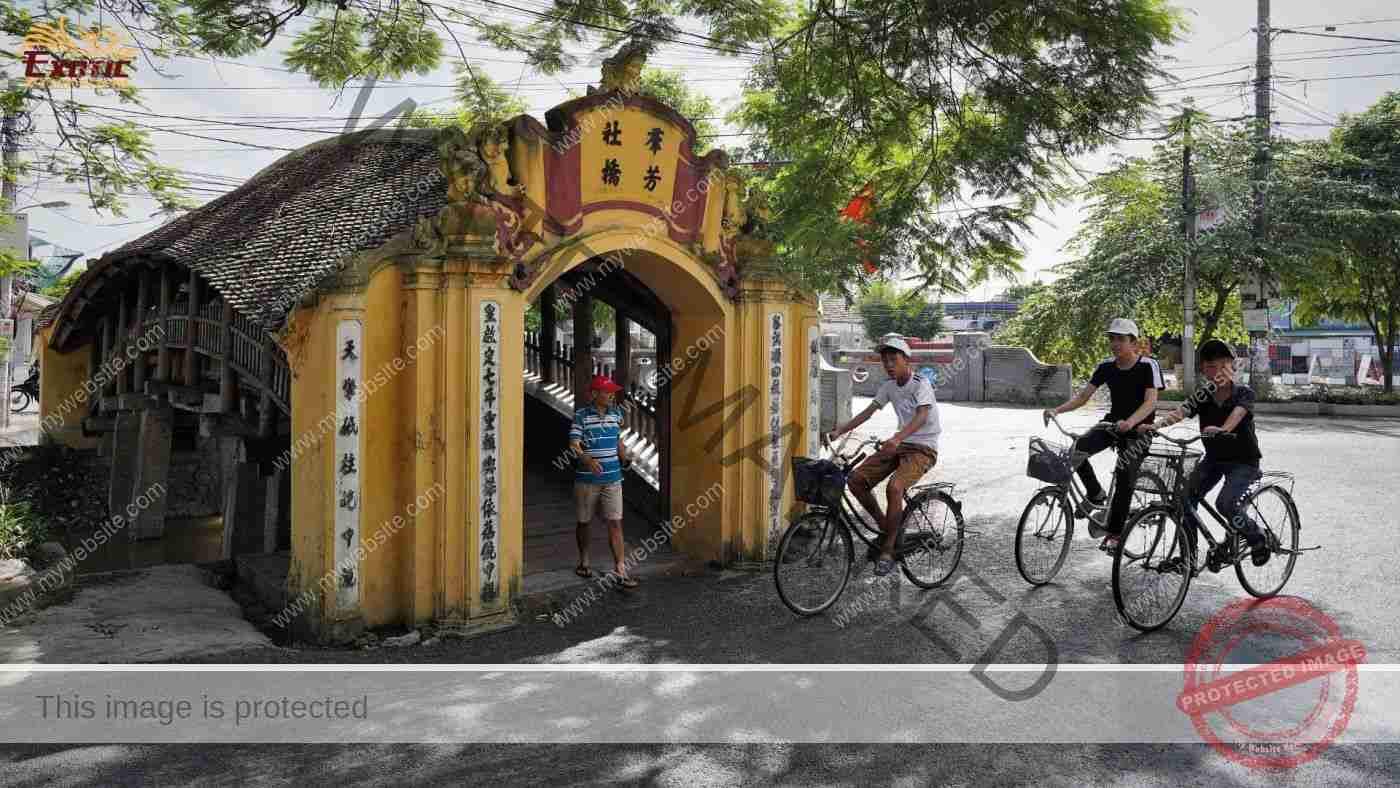
Hai Hau Countryside
In 1461, Emperor Le Thanh Ton issued policies to encourage people to reclaim in coastal alluvial areas. History books record four pioneers including Mr. Tran Vu, Mr. Vu Chi, Mr. Hoang Gia, Mr. Pham Cap and their descendants who came to the sea of Hai Hau today, established Phu Cuong quarter, later changed to Quan Cuong hamlet, in 1511 changed to Quan Anh commune. The first large-scale salinity prevention dyke, Hong Duc dyke, running along the coast of the Red River Delta, was completed in the late 15th century. Along with the opening of creeks, the Xe river was excavated to bring fresh water to remove salt from the fields, in a short time, the deserted flooded grounds full of reeds, became fertile land of lush rice fields. By 1888, Hai Hau district was established consisting of many rich villages, living mainly on wet rice cultivation, and secondary income from fishing and salt making.
Hai Hau is also famous for countless Catholic churches, each with a different architectural mark. Many churches are hundreds of years old, ancient and mossy, sone of which have been restored or newly built, but still keep their original appearance. This is followed by a visit to Cho Luong tile-roofed bridge which was built from 1509 -1515 (restored in 1922 and 2010) across the Hoanh River, is a must stop for all visitors to take a picture of the ancient architectural heritage. Coming to Hai Hau, visitors have the opportunity to explore the daily life of the locals, learn about the customs and habits of ancestor worship, visit traditional craft villages such as silk nursery, bronze trumpet making, water puppetry, carpentry, and so on, taste local specialties, and above all feel the sincerity and simplicity of locals.
Exotic Vietnam introduces a team building program in the format of The Amazing Race or Treasure Hunt. That’s a fun and unique rural adventure and takes participants to move with bicycles, on foot, inflatable rafting or local vehicles. The players have got a close up to the communities and give hands on interaction with their daily works to find hidden clues. Rach village – water puppetry, Hai Ly – church ruins, Bach Long – salt field, Xuan Thuy – national park, etc. are among the places to be found by GPS devices or maps. Here, the team building challenges are designed to simulate local values, helping players both expand local knowledge and improve teamwork. The impression of a rustic Hai Hau countryside, from rice fields, ancient architecture, to hospitable residents will be kept forever in everyone’s mind.
